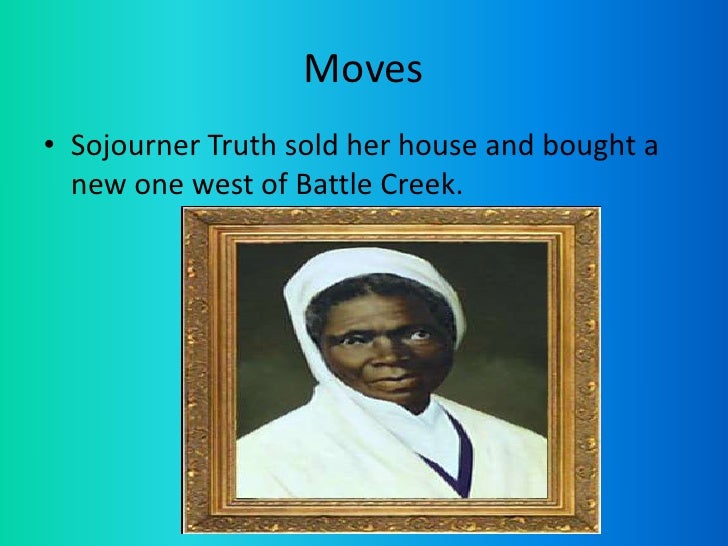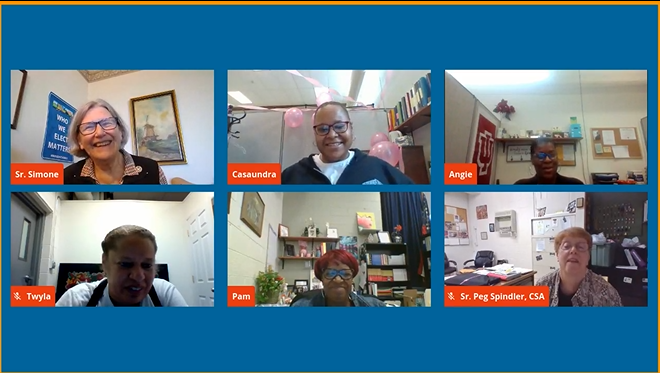Sojourner Truth Quotes, Facts & Speech
Table Of Content

During her time with the Van Wengers, Isabella successfully sued for the return of her son, Peter, whom Dumont had illegally sold to an owner in Alabama. After a profound religious experience, she became a devout Christian and began to preach. She and Peter moved in 1829 to New York City, where she worked for and with two Christian evangelists over more than a decade.

Sojourner Truth's Husband and Children
"Their children are not talking, not trusting. They're sad and depressed." "She's steady and quiet, strong, but compassionate. She speaks the truth and has a great sense of humor." For the last 30 years, Grimes-Johnson has been opening the door to Sojourner Truth House and helping women change their lives by offering safety, counseling, comfort and a welcoming and warm spirit. Truth moved to New York City in 1828, where she worked for a local minister. By the early 1830s, she participated in the religious revivals that were sweeping the state and became a charismatic speaker. In 1843, she declared that the Spirit called on her to preach the truth, renaming herself Sojourner Truth.

SHELTER
Neely was a cruel and violent master who beat the young girl regularly. She was sold two more times by age 13 and ultimately ended up at the West Park, New York, home of John Dumont and his second wife Elizabeth. Thus began a long string of residence in religious households or communities. These groups were forged in the foment of the Second Great Awakening, when idiosyncratic Christian sects abounded. “And then she was a perfectionist”—a religious persuasion in which people believed they could become free of sin.
DENSO Commemorates Sojourner Truth after Historic Home Site Discovery in Battle Creek News News DENSO US ... - Denso
DENSO Commemorates Sojourner Truth after Historic Home Site Discovery in Battle Creek News News DENSO US ....
Posted: Tue, 28 Feb 2023 08:00:00 GMT [source]
SILENCES IN THE ARCHIVE: WOMEN'S HISTORY AND PRIMARY SOURCES (CIVIL WAR)
The words come tumbling out as each of the women describes why she stayed and why she left and sought refuge at the Sojourner Truth House for battered women and their children. The voices of the 10 women sitting around the circular tables at Sojourner Truth House are edged in sadness and pain as they describe the physical, mental and emotional hurt they endured at home, where love turned into abuse and violence. The U.S. Treasury Department announced in 2016 that an image of Sojourner Truth will appear on the back of a newly designed $10 bill along with Lucretia Mott, Susan B. Anthony, Elizabeth Cady Stanton, Alice Paul and the 1913 Woman Suffrage Procession.
The result of freedom
Sojourner Truth House Color Walk paints the town - Portage.Life
Sojourner Truth House Color Walk paints the town.
Posted: Sat, 08 Jun 2019 07:00:00 GMT [source]
After going to court to recover her son in 1828, she became the first black woman to win such a case against a white man. Sojourner Truth was born into slavery as Isabella Baumfree in 1797 in Ulster County, New York. She escaped slavery in 1827 and took her new name – Sojourner Truth – in 1843 before embarking on a path to preach for emancipation. After meeting Elizabeth Cady Stanton in 1850, Truth began to passionately advocate for women’s rights. Throughout her life, Truth fought bravely against racial injustices and spoke up for women’s suffrage.
Sojourner Truth House Day Center Program
Jefferson completed combat training at Selfridge Field in Mount Clemens and pilot training at the Tuskegee Army Airfield. During his time with the Tuskegee Airmen, Jefferson was shot down in France and captured by Nazi ground troops. He was a prisoner of war in German-occupied Poland before he was freed by General George Patton’s U.S. Third Army. Postal Service letter carrier, earned a teaching certificate, and obtained a master’s degree in education from Wayne State University. He was discharged from active duty in 1947 and retired from the Reserves in 1969 with the rank of Lieutenant Colonel.
Truth died at her home in Battle Creek, Michigan, on November 26, 1883. She is buried alongside her family at Battle Creek's Oak Hill Cemetery. True to her broad reform ideals, Truth continued to agitate for change even after Lincoln issued his Emancipation Proclamation. In 1865, Truth attempted to force the desegregation of streetcars in Washington by riding in cars designated for white people. Truth dictated her recollections to a friend, Olive Gilbert, since she could not read or write.
Advocacy During the Civil War
His owners shuttled him between extended family and eventually freed two other elderly slaves to take care of him. “Many Americans are like that, who move through phases in their belief history,” said Painter, reflecting on the 19th century. “But the big thing, I think, was that she spent so much of her religious time with non-Black people.
Join the Community Ambassadors for STH
In the same year, she was introduced to abolitionism at a utopian community in Northampton, Massachusetts, and thereafter spoke in behalf of the movement throughout the state. In 1850 she traveled throughout the Midwest, where her reputation for personal magnetism preceded her and drew heavy crowds. She supported herself by selling copies of her book, The Narrative of Sojourner Truth, which she had dictated to Olive Gilbert. In 1844, Truth joined the Northampton Association of Education and Industry in Northampton, Massachusetts. Founded by abolitionists, the organization supported a broad reform agenda including women's rights and pacifism. Isabella made her way to New Paltz, New York, where she and her daughter were taken in as free people by Isaac and Maria Van Wagenen.
She was with these upper room groups”—prayer revival meetings that started in an upper room of Manhattan’s North Reformed Dutch Church and then spread all over the city. Truth moved in and out of spiritualist circles, befriending people who sought communication with the dead. Critics derided her as a “negro wench” and mocked her insights as ridiculous pretense. As her renown increased, the media amassed a vast collection of anecdotes, brimming with rhetorical brilliance. Her very quotability and array of interests were both her boon and her bane. It’s hard to capture the breadth of a woman who straddled various movements for decades—much easier to remember her for a four-word quote she almost certainly never said.
Kathie Stolpman, the former director of Sojourner, and other staff members surrounded her with support, she said. "This job fed me physically by putting bread on the table, and spiritually," she said. "There have been ups and downs, like a roller coaster. For the women and children, this is an emotional journey. You have to be careful of burnout." Finally, she answered a newspaper ad for a family advocate at the shelter in 1983. Dolly Grimes-Johnson, the director of the shelter, leads the discussion.
On May 29, 1851, a woman asked to address the attendees of the Ohio Women’s Rights Convention in Akron. She cut a striking figure, close to six feet tall even without her crisp bonnet. When you meet Lanonya and see the confidence and strength that beams from her face, you would never know that she was once a homeless mother of four. In the not-so-distant past, during long, difficult nights in a shelter in Calumet Township, she remembers feeling overwhelmed and unprepared for the journey back to being housed.
Comments
Post a Comment